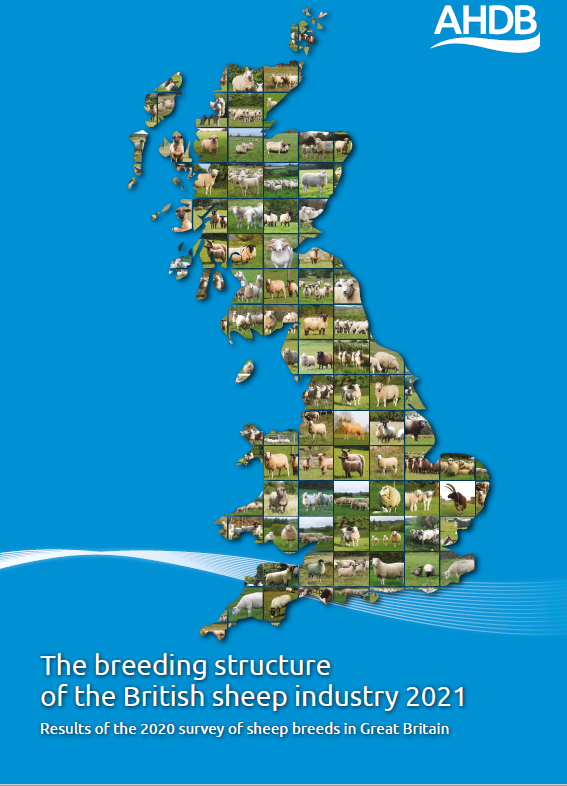Shaping the future with the latest Sheep Breed Survey results
Monday, 16 August 2021
More innovative use of crossbreeding within the British sheep industry was one of the most significant findings in the latest Sheep Breed Survey.
These results indicate that cross breeding strategies are becoming more diverse, reflecting the way sheep producers are adapting with the times and striving to improve performance.
The Sheep Breed Survey is an important reference point for researchers, funders and policy makers. It has been completed five times since 1971, with the last results published in 2012. The survey provides a unique insight into how the agricultural industry has changed over 50 years and highlights how future policy decisions may influence lowland and upland sheep production.
In a joint effort between industry levy boards and British Wool, 38,000 sheep producers were invited to take part in the survey last autumn; with data scaled up using the December census to paint a picture of the national scene.
The number of crossbred ewes in the national flock increased from 56 per cent to 58 per cent, indicating a small reduction in purebred ewe numbers compared to 2012. The three main hill ewe breeds (Scottish Blackface, Welsh Mountain and Swaledale) have dominated the purebreeding sector over the last decade, but the survey shows all three are now declining in number.
The size and number of hill flocks producing recognised crossbreeds (such as the mule or halfbred) are also in decline. The main types of Mule ewe (North Country, Welsh and Scottish) currently makeup 18.8 per cent of the national flock, but crossbreeds of other types now contribute significantly to the crossbred ewe population.
The Lleyn breed continues to dominate the non-hill sector with about half a million ewes found in 2020. Wool shedding breeds, such as the Easycare, Exlana and Wiltshire Horn, were found to be growing in number with about a quarter of a million ewes mating in 2020.
When we look at ram selection decisions, over a quarter of the rams used in Britain were Texel, a similar market share to 2012. The Suffolk was the next most numerous ram breed. Terminal sire breeds contribute 41 per cent of the genetic makeup of the lamb carcasses produced in Britain.
The proportion of rams reported to have estimated breeding values (EBVs) varied across breeds, with 8-12 per cent of the rams from the largest terminal sire breeds having EBVs. However, the under-reporting of recorded stock was observed.
The use of EBVs when buying rams was highest in the larger flocks and those producing finished lambs. In each case, around 10 per cent of producers always used EBVs when buying rams and around 40 per cent sometimes used them. However, it’s clear many producers still don’t use this information for ram selection. The main reason for not using EBVs is reported to be a lack of access to the right information.
One highly significant finding was that the proportion of purebred rams used in the national flock has fallen from 93 per cent to 83 per cent in the past eight years, with both composite and crossbred rams increasing their market share.
The survey also asked producers questions about their flock management practices. The body condition scoring of ewes was used at least once a year in about three-quarters of flocks, but around 30 per cent of flocks chose not to weigh their lambs.
The large majority of flocks did not take sward height measurements to manage their grassland or use electronic identification to manage their flock beyond current legal requirements. These findings highlight opportunities for frequent knowledge exchange, showcasing practices that have been successfully adopted and bringing attention to those that are underutilized or less valued.
Full details on the results of the Sheep Beed Survey can be found online at https://www.signetdata.com/technical/projects/sheep-breed-survey/
The Sheep Breed Survey 2020 was run by AHDB/Signet Breeding Services and funded by the levy bodies (AHDB, QMS and HCC) with support from British Wool. The data analysis was completed by Dr Geoff Pollott, Royal Veterinary College.


